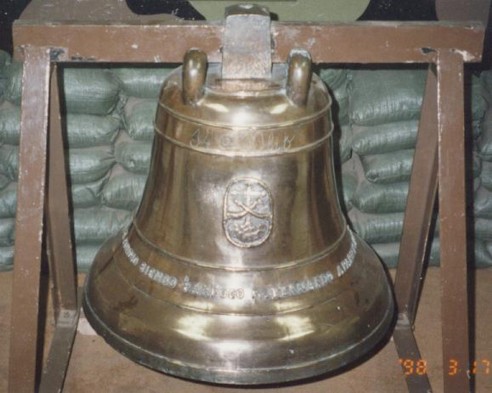
The real church bell of Balangiga appears to be in Asia and not in the United States after all.
This thought first came as a hunch after I came across an Internet reference to a Casper-Star Tribune (Wyoming) report about a "third" Balangiga bell with the US forces in Korea. Then I began rereading the documentary evidence.
In Eugenio Daza's 1935 deposition, he mentioned that "one of the bells" that were rung to signal the attack on the American garrison in Balangiga was taken to the United States. In another article in the Leyte-Samar Studies journal, there is a photograph of 15 American survivors of the Balangiga massacre and a native boy and a church bell, which looked much smaller than the two famous bells now displayed at F.E. Warren Air Force Base in Wyoming. I surmised that the bell in the picture was the one taken from Balangiga Church.
While surfing through the Net, I came across a message of Maj. Daniel N. Tarter, former commander of Company C, 1st Battalion, Ninth Infantry Regiment, the same unit whose predecessors were massacred by native fighters in Balangiga in Sept. 1901. Commenting on the Jan. 9 Asiaweek article about the Bells of Balangiga, Tarter expressed doubts about the authenticity of the "Balangiga bells" in Wyoming. He said the bell of Balangiga was with the Ninth Infantry Regiment stationed at Camp Hovey near Tongduchon, South Korea. He last saw this bell in April 1997. As former commander of Company C, Tarter agreed that it was time to send the bell back to Balangiga.
So why have US President Clinton and the military given us the runaround all these years? They presumably had the correct information all along, and could have turned over the bell much more easily. Clinton offered to return the Wyoming bells in 1994. After that, we were thrown to the mercy of the people of Wyoming and later, of politicians is the US Congress.
For years, the two "Balangiga bells" in Wyoming were distant symbols of Filipino determination to resist US colonialism. Today, only the plaque at their base seems to be telling some truth about the historical relevance of the Balangiga event. The relics themselves, which were probably looted from other churches in Samar, have become new symbols of American duplicity and propensity for cover-up.
We want the real bell of Balangiga (the one in Korea?) returned. After so much recrimination, I propose that the fake "Balangiga bells" in Wyoming be kept where they are. We are back to 1898 all over again.